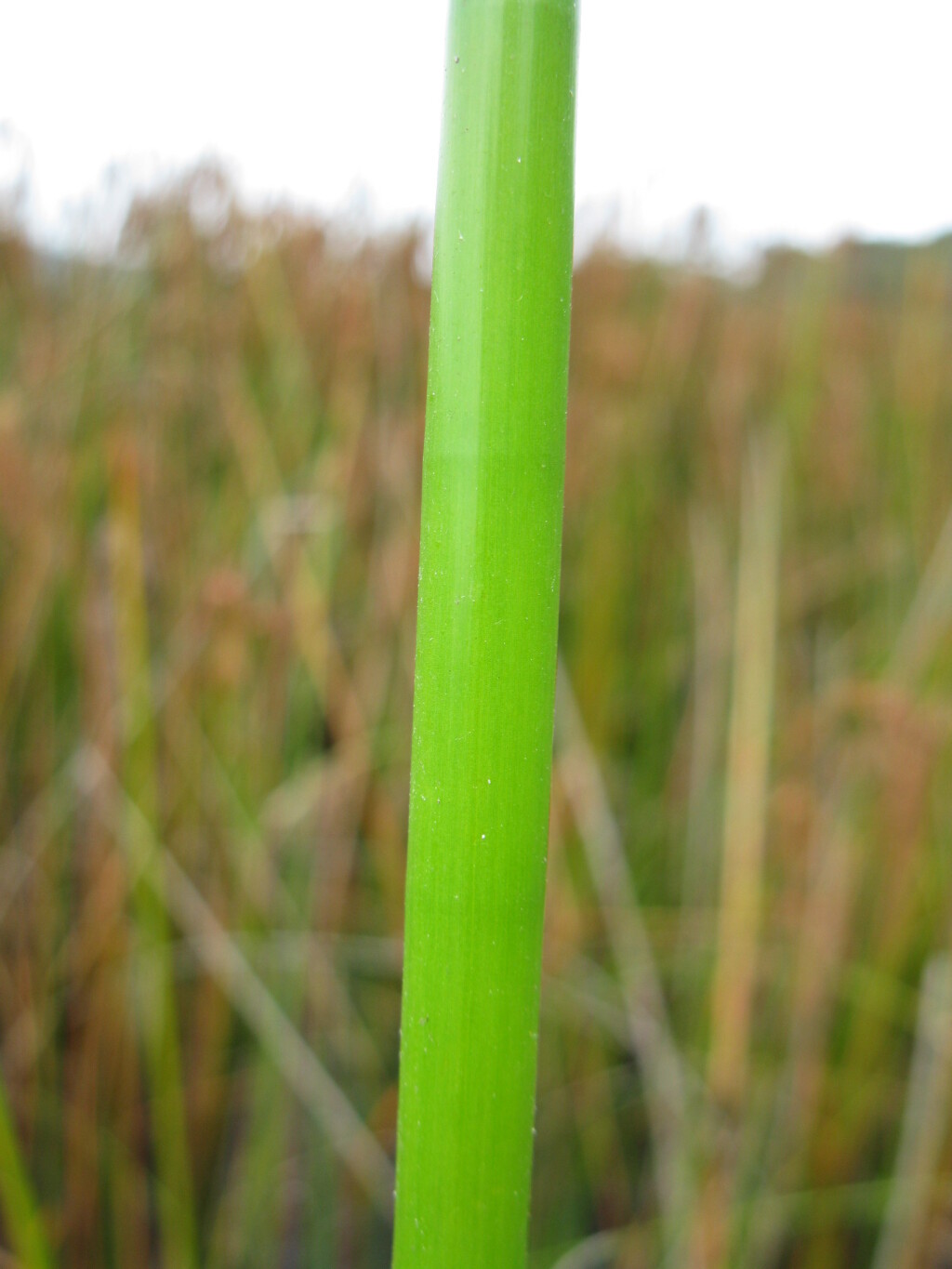Machaerina
Perennials with short or long rhizomes. Culms erect, tufted, noded or nodeless. Leaves isobilateral, flattened to terete or reduced, glabrous. Inflorescence panicle-like, sometimes reduced; involucral bracts culm-like. Spikelets usually clustered, with 1–5 bisexual flowers; rachilla persistent. Glumes few, spirally arranged or obscurely distichous, keeled, usually the lowest 1–3 empty, often shorter than fertile glumes; perianth absent; stamens 3; style 3-fid, deciduous; style-base thickened, persistent on nut, fused as hemispherical to conical apex, often minutely hispid or papillose. Nut trigonous to terete, prominently to obscurely 3-ribbed, smooth at maturity, otherwise irregularly wrinkled.
About 55 species from tropical and temperate regions; 17 species in Australia (11 endemic), represented in all States.
This concept now includes Baumea. Both have been included in Cladium s.lat. in the past but that is not closely related.
Machaerina teretifolia (R.Br.) T.Koyama was reported for Victoria by Willis (1970, p. 244) on the basis of two collections from Beechworth. They are referable to M. planifolia.
Wilson, K.L. (1994). Cyperaceae. In: Walsh, N.G.; Entwisle, T.J., Flora of Victoria Vol. 2, Ferns and Allied Plants, Conifers and Monocotyledons, pp. 238–356. Inkata Press, Melbourne.
 Spinning
SpinningSynonyms
Viljoen, J.-A.; Muasya, A.M.; Barrett, R.L.; Bruhl, J.J.; Gibbs, A.K.; Slingsby, J.A.; Wilson, K.L.; Verboom, A.G. (2013). Radiation and repeated transoceanic dispersal of Schoeneae (Cyperaceae) through the Southern Hemisphere. *American Journal of Botany * 100: 2494–2508.
Wilson, K.L. (2015). Two new species and three new combinations in Cyperaceae of New Caledonia and Australia. Telopea 18: 127–134.




